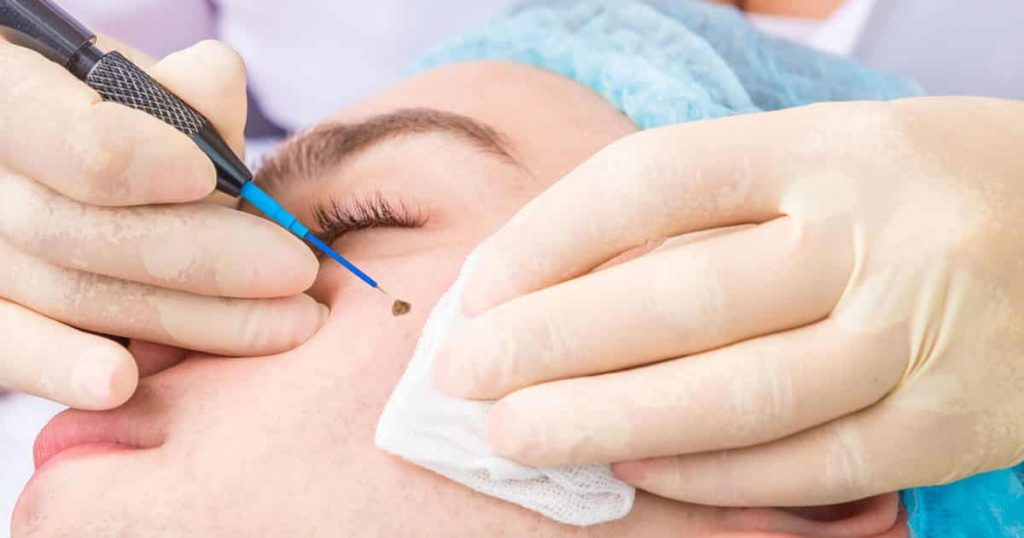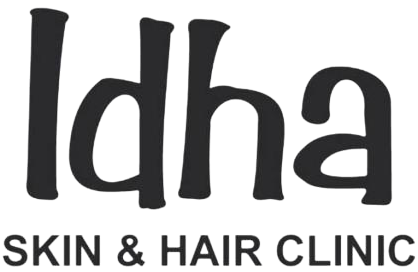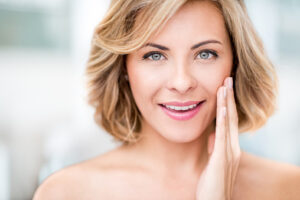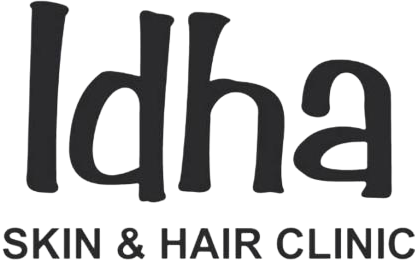Skin education

Three wavelengths of ultraviolet (UV) radiation from the sun are UVA, UVB, and UVC. When it comes to tanning, blistering, and photo ageing, UVA and UVB play different roles
VIRGIN BLUE RADIATION
Up to 95% of the UV light from the sun that reaches the earth has a long wavelength and belongs to the UVA family. Long and strong UVA rays can reach deep within the skin. We are frequently exposed to high levels of UVA radiation because they can even pass through glass and clouds. They harm the skin, contributing to accelerated ageing, sagging, and wrinkles as well as skin cancer.
CONCERNING UVB RADIATION
In the middle of the UV spectrum is UVB. It contributes significantly to the growth of skin cancer and causes burning, tanning, and skin ageing. Between 10 am and 4 pm, UVB exposure is at its peak. Glass is not a barrier to UVB radiation. Overexposure to it results in uneven texture and brittle, leathery pigmented skin.
CONCERNING UVC RADIATION
The ozone layer entirely absorbs UVC, rendering it harmless to skin.
Avoid being in the sun directly between 10 am and 4 pm.
SCREEN AND ITS APPLICATIONS
The most valuable cosmetic item one may regularly apply to stop early UV damage of the skin is sunscreen.
Quick links
- Skin clinic in Bangalore
- Skincare in Bangalore
- Hair care in Bangalore
- Skin specialist in Bangalore
- Hair specialist in Bangalore
- Skincare In Jayanagar
- Skincare Clinic in Banashankari
- Skincare Clinic in JP Nagar
- Acne Treatment
- Pigmentation Treatment
- Stretch Marks Treatment
- Tatoo and Mole Removal
- Skin Rejuvenation
Both UVA and UVB radiations are produced by the sun and can result in sunburn and tanning on exposed skin. A single exposure might result in painful, flaming sunburn. Long-term sun exposure can lead to photo ageing, wrinkles, age spots, freckles, and changes in the skin’s texture. For all age groups, sunscreen is a need. A good sunscreen should contain both chemical and physical blockers, such as zinc oxide and titanium dioxide, as well as salicylates and cinnamates as chemical blockers.
A reliable sunshade
For the patient’s compliance, a decent sunscreen should be cosmetically pleasing.
Broad spectrum and UVA and UVB protection are required.
There should be a mix of chemical and physical barriers in it.
Components that are recognised to be allergies or irritants shouldn’t be present.
It must be water-resistant.
Non-comedogenic and reasonably priced sunscreen are both desirable qualities.
Types of sunscreen and skin
Use lightweight, sweat-proof, non-comedogenic, oil-free, and paraben-free sunscreens if you have oily skin.
Use non-comedogenic, colourless sunscreens with melting textures for dry skin. They should also be photostable and non-comedogenic.
DUE DATE FOR SUNSCREEN USE
Not just in the summer, but all year round, you should use sunscreen. It is untrue that cloudy days do not require sun protection because they only have 20% less UV rays. Severe sunburn can happen anywhere, either high in the snowy mountains or on the sandy beaches. In these situations, one requires sunscreen with a higher SPF. Due to the fact that UVA radiation can pass through window glass, sunscreen is necessary even when spending a lot of time indoors or travelling by car.
ADDITIONAL PHOTO PROTECTION METHODS
Put on dry, loose cotton garments.
Stay out of the sun from 10 am to 4 pm.
Wear sunglasses and a hat with a wide brim.
Use face powders or cosmetics with SPF to offer mediocre protection.
Avoid wearing perfumes since the psoralens in them might cause pigmentation when exposed to the sun. Instead, spritz it on your clothes.
SPF AND ITS IMPLICATION
The SPF rating indicates how long you can spend outside without getting burned or red. A SPF of at least 30 is advised. Apply sunscreen at least 15 to 20 minutes before exposure, and reapply every two to three hours. SPF does not mean that tanning is prevented.
ON A SUNSCREEN, LABELS
Broad spectrum: Guards against UVA and UVB radiation Water-resistant – Maintains the SPF even after being submerged in water for 30 to 40 minutes.
I DON’T NEED A SUNSCREEN IN THE MORNING: MYTHS RELATING TO THE SUN AND SKIN
The peak time for UVA and UVB rays is between 10 am and 4 pm. Even early in the morning or late in the day, throughout the winter or on gloomy days, UVA rays are present while it is bright outside. Therefore, sunscreen is always necessary.
MYTH 2: I DO NOT NEED TO BE CONCERNED IF I WEAR A SPF 70 SUN SCREEN.
The level of protection provided by higher SPFs is negligible. SPF 15 blocks 93% of UVB radiation from the sun, SPF 30 blocks 97%, and SPF 50 blocks 98%. A sunscreen’s broad spectrum rating is more significant because it offers protection from UVA and UVB radiation.
MYTH 3: “WATERPROOF” MEANS “WATER-RESISTANT,”
While sunscreen isn’t waterproof, it is water-resistant, allowing it to stay on longer than ordinary sunscreens even after taking a dip in the water. Additionally, it won’t remain on all day once you’ve dried off with a towel after taking a swim. It must therefore be applied again for it to continue to work.
Myth 4: To get vitamin D, I need direct sunlight.
The intake of vitamin D cannot be increased safely or effectively with prolonged sun exposure. Only the early morning sun, between 7 and 9.30 am, is beneficial and secure for producing vitamin D. Vitamin D can also be obtained in sufficient and healthy amounts through a diet.
SKIN CARE FOR SUNSCREEN DAMAGE
Chemical and gel peels
micro-pulse therapy
a mesotherapy procedure
Oxyrevive therapy
Fillers and Botox
OILY SKIN CARE
Shiny skin is skin that is oily, especially in the T-zone (the forehead, nose and chin). It is brought on by glands that produce excessive amounts of oil, which results in skin that is greasy, glossy, and has wide pores.
Enlarged pores, acne, and blackheads are all indicators of oily skin and are all brought on by increased oil production by oil glands.
Such skin is frequently prone to fungus infections and dandruff on the scalp.
The benefit of oily skin is that it ages more gracefully than dry skin since the oils keep the skin hydrated and prevent wrinkles from forming.
Use a lightweight, non-comedogenic sunscreen together with lactic acid-based moisturisers and face washes that contain salicylic acid.
TREATMENTS
Chemical Peels with CACI Therapy
Microdermabrasion
Alma Photo Treatment for Pores on the Face
DRY SKIN CARE
Inactive oil glands that don’t produce enough sebum for lubrication are the root cause of dry skin.
The skin is dry and irritated, and it has a dull appearance.
Particularly after cleansing, the skin feels tight and is prone to flaking and red spots.
It tends to have creases and fine lines.
Due to a buildup of dead skin cells, dry skin may seem ashy or dull.
Regular fresh water misting and moisturising with hydrating creams or lotions are required for dry skin. The secret to removing the dry layers and revealing a bright, clear skin is to use calming and moisturising creams with delicate yet potent ingredients.
Use Luke warm water for cleaning rather than hot water. Use gentle, non-soapy cleansers or creamy face washes to protect the skin’s natural oils. Use glycerine-containing cleansers. For dry skin, rich moisturising moisturisers are necessary. These will raise the water content of the skin, make it smoother, and lessen the irritating, stinging, and burning sensations.
TREATMENTS
Facial Oxygen Treatment
CACI Therapy
Peeling gel
Hydration using a Dermaroller
NORMAL SKIN/COMBINATION SKIN CARE
A combination skin type may have normal or uneven, drier skin on the cheeks and a slightly oily T-zone (the forehead, nose, and chin).
Skin with an even, smooth texture and rather adequate blood circulation.
Skin appears dependably plump, moist, and lively with a healthy-looking colour.
Use a moisturiser, sunscreen, and cleanser.
Treatments Polishing the skin (MICRODERMABRASION)
CACI Therapy
Facial Oxygen Treatment
Peeling Chemical Alma Photo Facial


